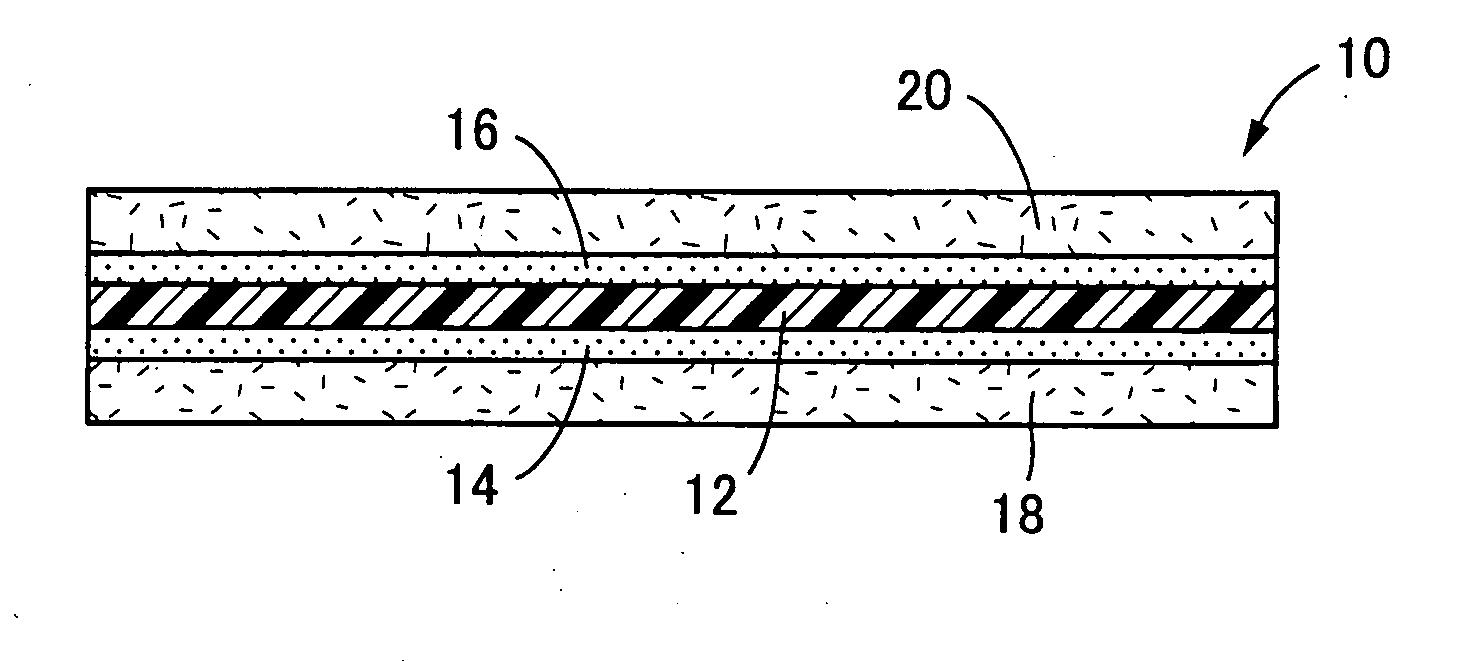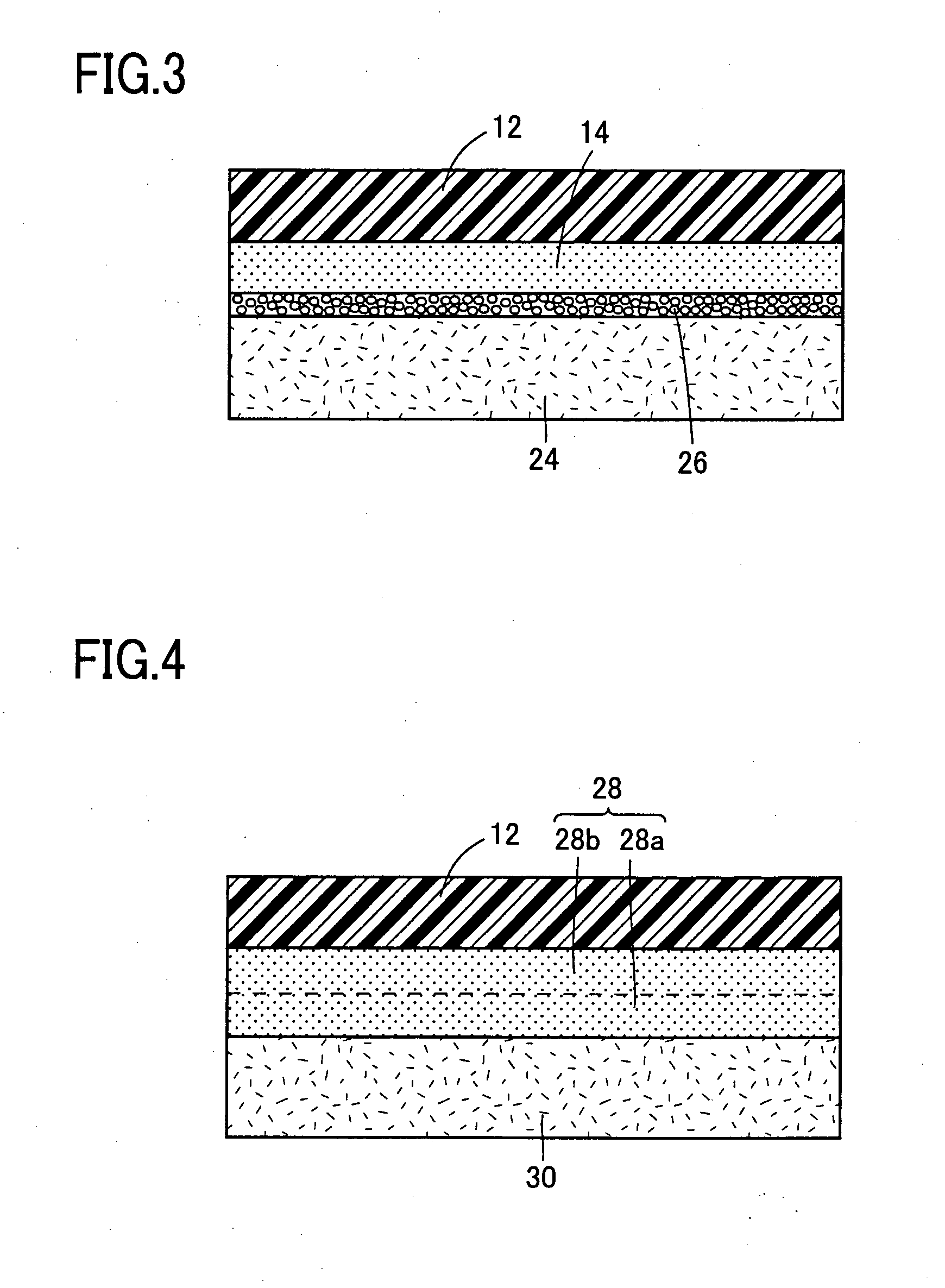Laminated layer fuel cell and method for manufacturing the same
a fuel cell and laminate technology, applied in the direction of cell components, final product manufacturing, sustainable manufacturing/processing, etc., can solve the problems of insufficient gaseous diffusion performance and inability to restraining impregnation, and achieve the effects of lowering gaseous diffusion performance, reducing viscosity, and high outpu
- Summary
- Abstract
- Description
- Claims
- Application Information
AI Technical Summary
Benefits of technology
Problems solved by technology
Method used
Image
Examples
Embodiment Construction
[0044]Hereinafter, there will be described the present invention by reference to the drawings. The figures are appropriately simplified or transformed, and all the proportion of the dimension and the shape of a portion or member may not be reflective of the real one in the following embodiments.
[0045]FIG. 1 illustrates a membrane electrode assembly (MEA) 10 of a plate type in a cross sectional view according to an embodiment of the present invention. The MEA 10 includes a thin layer of an electrolyte membrane 12 that expands as a plate, catalyst layers 14, 16, and gaseous diffusion electrodes 18, 20. The catalyst layers 14, 16 are respectively disposed on each surface of the electrolyte membrane 12, and the gaseous diffusion electrodes 18, 20 are respectively disposed on each surface of the catalyst layers 14, 16 as shown in FIG. 1. That is, the electrolyte membrane 12 is interposed between the catalyst layers 14, 16, and a set of the electrolyte membrane 12 and the catalyst layers ...
PUM
| Property | Measurement | Unit |
|---|---|---|
| viscosity | aaaaa | aaaaa |
| temperature | aaaaa | aaaaa |
| diameter | aaaaa | aaaaa |
Abstract
Description
Claims
Application Information
 Login to View More
Login to View More - R&D
- Intellectual Property
- Life Sciences
- Materials
- Tech Scout
- Unparalleled Data Quality
- Higher Quality Content
- 60% Fewer Hallucinations
Browse by: Latest US Patents, China's latest patents, Technical Efficacy Thesaurus, Application Domain, Technology Topic, Popular Technical Reports.
© 2025 PatSnap. All rights reserved.Legal|Privacy policy|Modern Slavery Act Transparency Statement|Sitemap|About US| Contact US: help@patsnap.com



